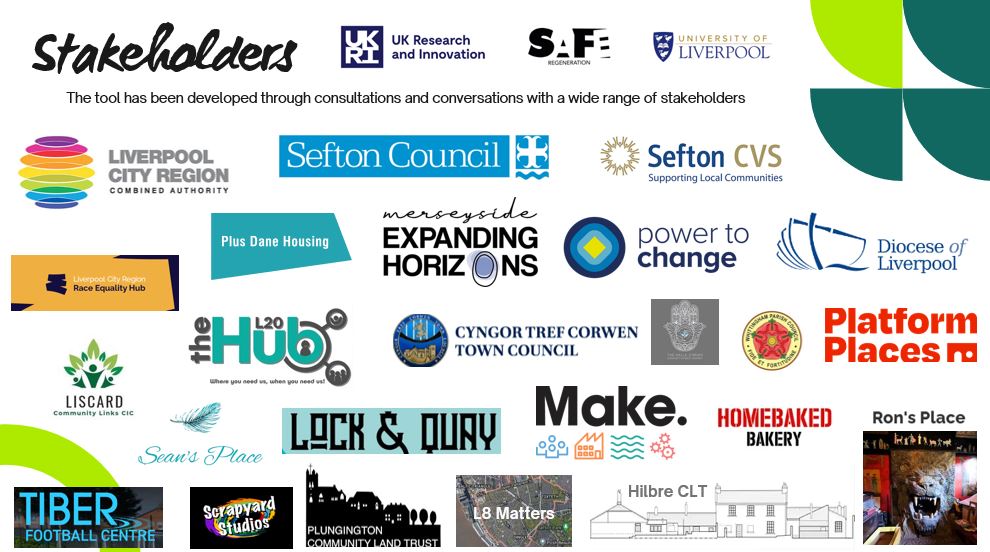More than 40 community partners joined with University of Liverpool researchers and project partner Safe Regeneration, to celebrate the launch of a new online, interactive Neighbourhood Transformation Planning Tool (NTPT).
Funded by Research England through the University of Liverpool Public Policy Quality Related Scheme, the project addresses the University's commitment to inclusion and social responsibility by helping community groups to navigate the complex process of community asset development.
Community assets are buildings and land used for the wellbeing or social interest of the local community, such as parks, housing, workspaces, centres, theatres and pubs, run by communities, for communities. Community assets provide affordable and accessible spaces for collective gathering and organising, enhancing sense of belonging and local pride, and improving quality of life.
Community asset development can build wealth within communities by transforming derelict buildings and unused pockets of urban land into valuable community assets that offer spaces for community engagement and wellbeing and generate sustainable incomes for the groups that run them, reducing reliance on grants and donations. More than 700 potential sites have been identified across the city region, and there are thousands more across the country.
The University of Liverpool-developed tool will enable communities to play a greater role in developing such sites in the coming years.

Principal investigator, Dr Kerry Traynor, from the University of Liverpool's Department of Communication and Media said: "It's been fantastic to come together as a community, share experiences and challenges, and explore ways forward. It's important that support for the sector is underpinned by robust research, informed by lived experience of those involved in community development, and accessible, inclusive and relatable for small-scale developers, which is why we took a co-production approach to design of this tool. It's been a really valuable and timely process and an exciting time for community developers with lots of interesting opportunities ahead."
Safe Regeneration CEO and Founder, Brian Dawe, said: "We're delighted to have worked with the University of Liverpool and all our community and third sector stakeholders to co-design this new tool to support community asset development. Safe Regeneration has successfully created two community assets, a community arts centre and the region's only community pub, the canalside Lock and Quay, where all profits are reinvested into community development and social benefit, and now we're working with communities across North Wales and North West England to share that learning and help them develop their own community assets that can generate income and enhance sustainability. We talk about 'neighbourhood transformation' because we want to be bold and raise aspirations of communities to help them understand the change that they can create, with the right support. What we need now is a new community leadership development programme to bring community developers together and offer mentoring and coaching to support them through the process step-by-step."
Co-Investigator, Dr Tom Moore from the School of Environmental Sciences at the University of Liverpool, said: "We had a fantastic afternoon at the community-owned Lock & Quay pub in Bootle. It has been a pleasure to work on this project and it was great to meet so many activists and people involved in our city region's social economy. However, our conversations reminded us that there is still so much that can be done, and we hope that our new tool can be a part of helping to support and grow the community asset sector."
Safe Regeneration Partnerships Director, Jane Dawe, who led engagement with city region stakeholders, said: "We're really proud to strengthen our relationship with the University of Liverpool as the community engagement lead on this project. The community development sector is fantastically diverse, with communities developing all kinds of assets, from community meeting spaces, to workspaces and studios for creative practice, to retail spaces like bakeries, pubs and shops, to outdoor spaces like markets, parks and woodlands. We're delighted that so many diverse groups have already fed into development of the tool, and we'll continue to listen to, and work with, stakeholders to develop it further in the years to come."






